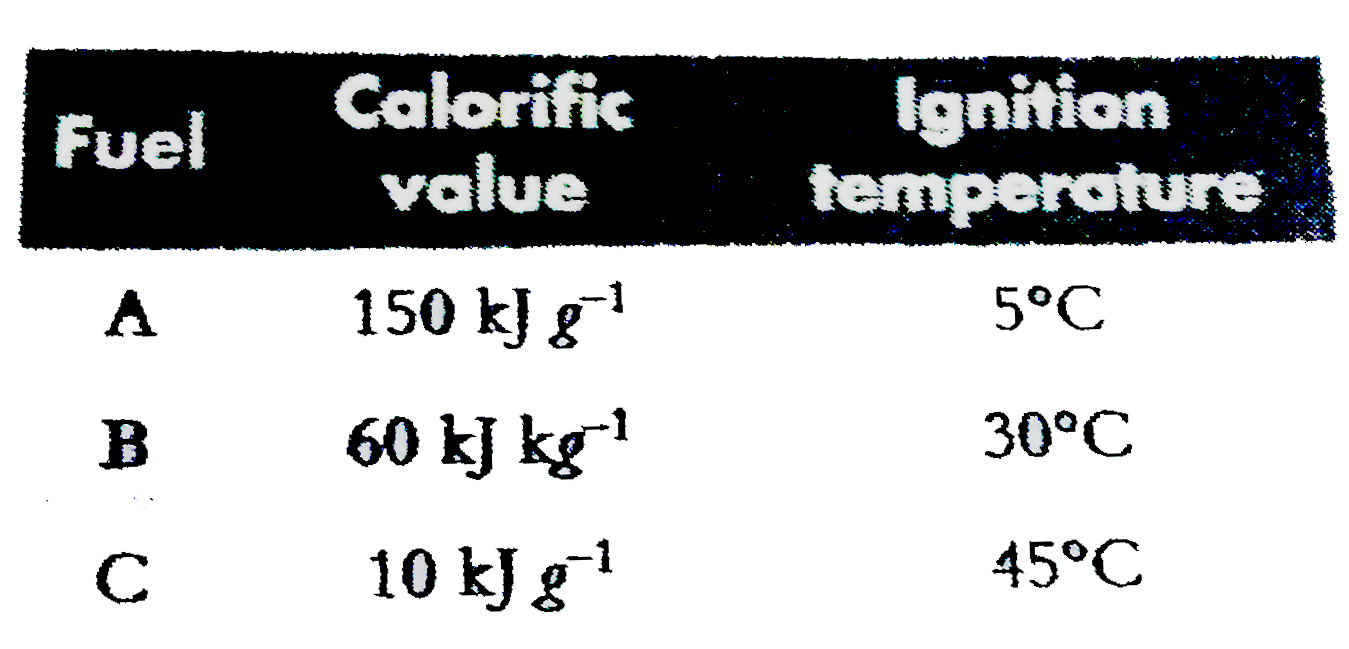Complete Solutions to Concept Application (Level 2) of chapter SOURCES OF ENERGY of Class 8 book with complete answers and questions
| Class 8 | PHYSICS |
| Chapter | SOURCES OF ENERGY |
| PEARSON IIT JEE FOUNDATION | Concept Application (Level 2) |
| Number Of Questions | 20 |
| Academic Year | 2023-24 |
Hydrogen gas which is easily available on the earth is going to be the next promising fuel ' -discuss.
02:23View SolutionA solar panel containing 1500 solar cells each of surface area 5 cm arranged in parallel combination, is used to supply electrical energy for domestic needs. The efficiency of a solar cell is 35% and 600 J of energy is incident on one square metre area in one second, find the electrical energy generated in one hour.
04:51View SolutionHow much energy will 1 kg mass of wood yield on complete combustion if its calorific value were 18 kJ `g^(-1)`?
01:31View SolutionAmong the given fuels, justify which one is a good fuel ?
 01:23View Solution
01:23View SolutionSome renewable sources of energy are given below : solar energy, tidal energy, biogas energy, hydel energy , OTEC, wind energy, geothermal energy, ocean wave energy. Which of the given sources are more reliable and consistent in availability.
01:02View SolutionThe flame of candle or kerosene stove is sometimes yellow and sometimes blue. What do these colours indicate ?
02:27View SolutionWhy is electric energy the most desirable form of energy ?
03:07View SolutionThe heat produced on complete combustion of 20 g of a fuel could raise the temperature of 1.5 kg of water form `25^(@)C` to `75^(@)C`. Calculate the calorific value of the fuel if the specific heat capacity of water is `4.2 J g^(-1).^(@)C^(-1)`. Assume that the heat absorbed by the container is negligible.
02:57View SolutionWhat are the advantages and disadvantage of using nuclear energy ?
03:39View Solution60 MJ energy is produced on combustion of 2 kg of coal. Find how much energy is produced on burning 0.5 kg of coal. Also find the calorific value of coal.
01:32View SolutionWhat are the advantages and disadvantages of using charcoal as a fuel as compared to wood ?
02:42View SolutionA piece of cloth is soaked in kerosene and another piece in water. When both are lighted with a match stick, which one will burn easily ? Why ?
01:52View SolutionWhat is the source of energy for an artificial satellite? Can this source of energy be used to run vehicles on the Earth?
01:56View SolutionFind the mass of the fuel required to raise the temperature of 2 kg of water in a copper container of mass 1 kg by `88^(@)C`. Given calorific value of fuel is 48 MJ `kg^(-1)`, specific heat capacity of water is 1 cal `g^(-1).^(@)C^(-1)` and specific heat capacity of copper is 0.095 cal `g^(-1).^(@)C^(-1)`.
04:27View SolutionA surface of area `1 m^2` kept perpendicular to the sun rays absorbs 3 MJ of solar energy in one hour.
What is the amount of solar energy absorbed by a solar heater when a surface of area `9 m^2` is exposed perpendicular to the sun rays for 4 hours.02:00View SolutionWhy do gaseous fuels have high calorific values ?
03:22View SolutionEvery form of energy manifested on the earth is dependent on solar energy either directly or indirectly. Is this true in case of fossil fuels.
02:06View SolutionWhy does blowing air put off a lighted match or a candle. But aid a spark of fire ?
02:13View SolutionWhy is it not possible to use solar cell panels to meet all our domestic energy needs ?
02:34View SolutionAt a place, the solar energy incident in one second is 640 J, on an area of one square metre. Assuming that all the solar energy is absorbed by 10 kg water, incident on its surface of area 400 `cm^(2)`. How much time will it take to raise its temperature by `70^(@)C`? (specific heat capacity of water is 4.2 J `g^(-1) .^(@)C^(-1)`)
06:13View Solution
Concept Application (Level 2) questions and complete solutions for chapter SOURCES OF ENERGY of PEARSON IIT JEE FOUNDATION of Class 8
All Exercises from PEARSON IIT JEE FOUNDATION Class 8 PHYSICS SOURCES OF ENERGY
- Concept Application (Level 1) Fill in the blanks
- Concept Application (Level 1) Matching
- Concept Application (Level 1) Select the correct alternative
- Concept Application (Level 1) True or False
- Concept Application (Level 2)
- Concept Application (Level-1)
- Essay type Question
- Level -2
- level -3
- level -4
- level -5
- level -6
- level -7
- Match the column
- Select the alternate
- Short Answer type Question
- Test Your Concepts (Very Short Answer )
- Very short Answer Type Question
